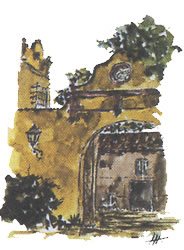Detection of botulinum toxin and/or Clostridium botulinum in ingested food suspected of causing botulism or in controlled food
Clostridium botulinum is a strict, gram-positive, anaerobic bacillus of the genus Clostridium, family Clostridiaceae, spore-forming that produces a neurotoxic toxin. This bacterium is usually found in the earth, in waters and its untreated sediments (oceans, lakes), with a worldwide distribution. In some circumstances this organism can contaminate food and grow in them producing its toxin/s. Botulism, a serious form of food poisoning, results mainly from the ingestion of food containing the toxin. Although this foodborne disease is rare, its mortality rate is high.
In any of the clinical forms of human botulism, and the same in animal botulism, the toxin enters the blood from the digestive tract when it has been ingested preformed with a food, or when it has been produced by the bacteria that colonize the digestive tract (small children or adults), or in exceptional cases from a wound infected by the bacteria. There are some foods that are more prone than others to contain botulinum toxin. Foods with pH lower than 4.5 are more difficult to cause botulism since at this pH, C. botulinum is unable to multiply and elaborate the toxin (this is the case of fruit juices, marinated foods in vinegar, etc.). On the other hand, foods with a pH equal to or higher than 4.5 can cause botulism, since they can multiply and produce toxins (this is the case of meats, fish, vegetables, prepared dishes, etc.), all those foods that are free from exposure to oxygen, such as canned or vacuum packed foods, and that have a pH greater than 4.6. They are examples of dangerous foods: cured or smoked ham, canned fish or vegetables (subjected to an insufficient heat treatment to destroy the spores), etc.
Tests available and recommended
- Culture test, followed by inoculation of mice with culture filtrate.
- If positive, confirmation test by neutralization.
- Alternative: Culture test, followed by molecular detection by real-time PCR of the presence of Clostridium botulinum producing botulinum toxin, without specifying type.
- Optional: If the presence of botulinum toxin is detected, identification of the type of toxin by real-time PCR for each of the genes producing the different types of botulinum toxin.
Required sample
- Sample of the suspected or controlled food (a minimum of about 100 grams is recommended) to prepare an extract for inoculating animals and thereby detect the presence of the preformed toxin in the food, and at the same time to prepare a culture from which to obtain the filtrate to inoculate animals and find out if the sample contains the toxin-producing bacteria, or alternatively to carry out a culture in which detect the genes encoding the toxin; if only remains of the ingested food are available, it is recommended to send the entire available quantity.
Schedule for results
- We cannot give exact times. If only the detection of the toxin in mice is carried out and it is negative, the report would be in a maximum of one week. If a culture of the sample is carried out, and subsequently the detection of the toxin by inoculating culture filtrates into batches of mice, the time would be two weeks. If any of these mouse inoculation tests, with a sample extract or with the enrichment culture filtrate, are positive, the neutralization test must be performed on mice to confirm that it is botulinum toxin, which take 15 days to be completed.
- Real-time PCR tests take 3 or 4 working days to be completed.
Sample storage and shipping conditions
- Samples must be stored and shipped in the conditions in which the sample is usually found, protected for transport. In the case of samples that may decompose due to contamination with bacteria, or due to their organic nature (perishable food), the samples must be kept and sent frozen, or at least under conditions that guarantee refrigeration during transport (packaging the sample inside an expanded polystyrene box – white cork – with frozen cold accumulators – frozen packs). Note: this microorganism does not pose a biological risk of contamination by exposure.
Form with product characteristics and chosen test(s)
- If you request that tests to be carried out, you must send us with the product the specific request form that we have attached, indicating the characteristics of the product and the chosen tests that you wish to be carried out on the sample sent.



